The color purple doesn’t occur frequently in nature but when it does, the results are stunning. Here, we’ve selected 28 beautiful purple plants to add a royal touch to your collection. If you want a purple houseplant but can’t think of anything other than a violet, we’ve got you covered!
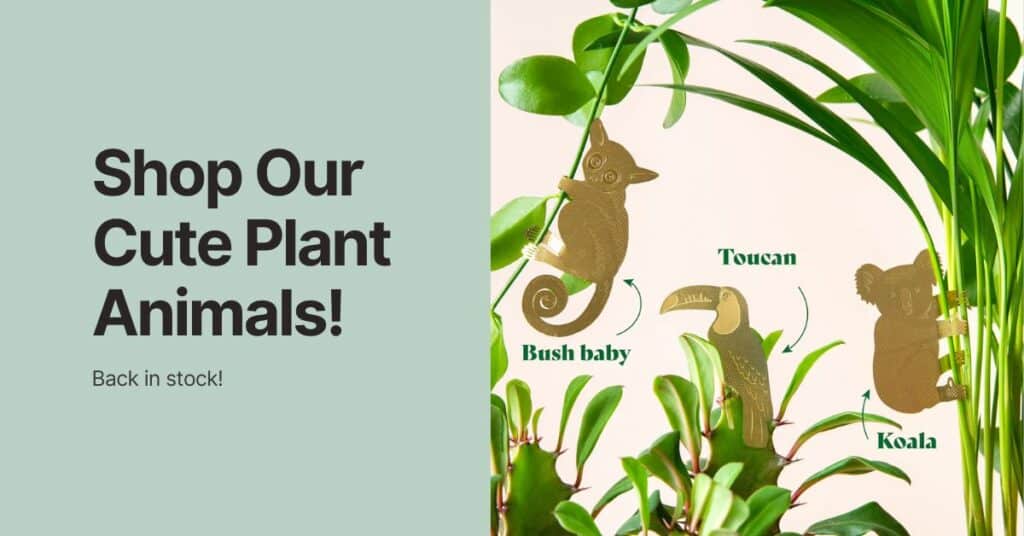
Our Favorite Purple Houseplants
Here are a few of our favorite purple houseplants that you can keep at home:
Purple Passion Plant
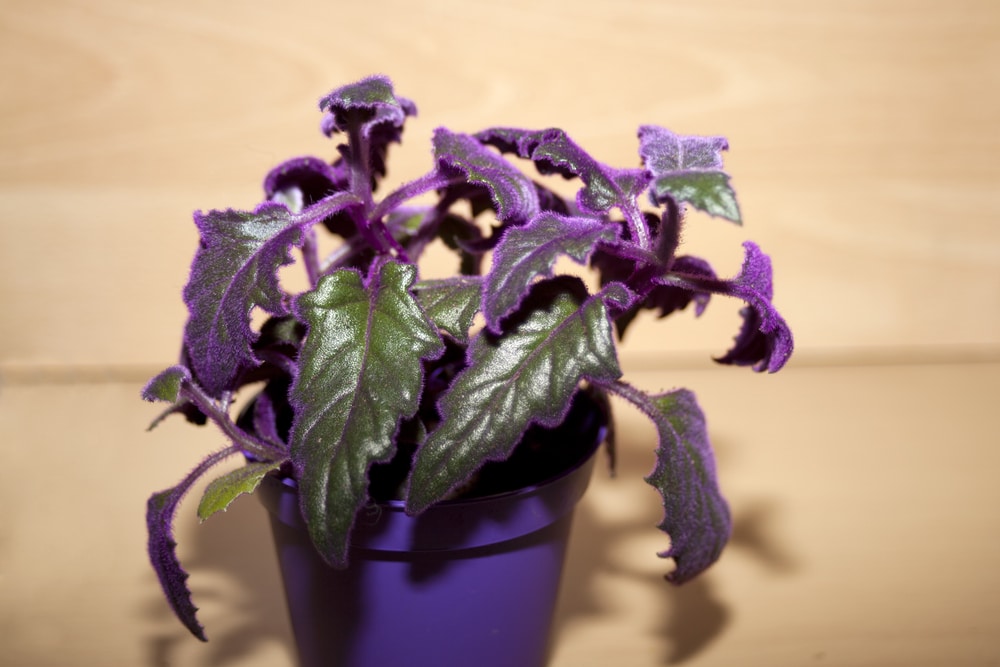
The purple passion plant (Gynura aurantiaca) is as exotic as it is beautiful. The distinctive leaves are velvet to the touch and outlined in bright purple. The purple passion is an annual plant, meaning that it is not possible to keep the same plant alive for years. Take buds or blossoming flowers as a sign that your plant is mature and it’s time to take cuttings. Luckily, the purple passion is one of the few varieties that looks better before they mature.
Caring for your purple passion couldn’t be easier. Put it in bright, indirect sunlight, water it moderately, and watch it flourish. Note that the purple passion plant’s color may fade if it doesn’t receive enough sunlight.
Purple Vanda Orchid
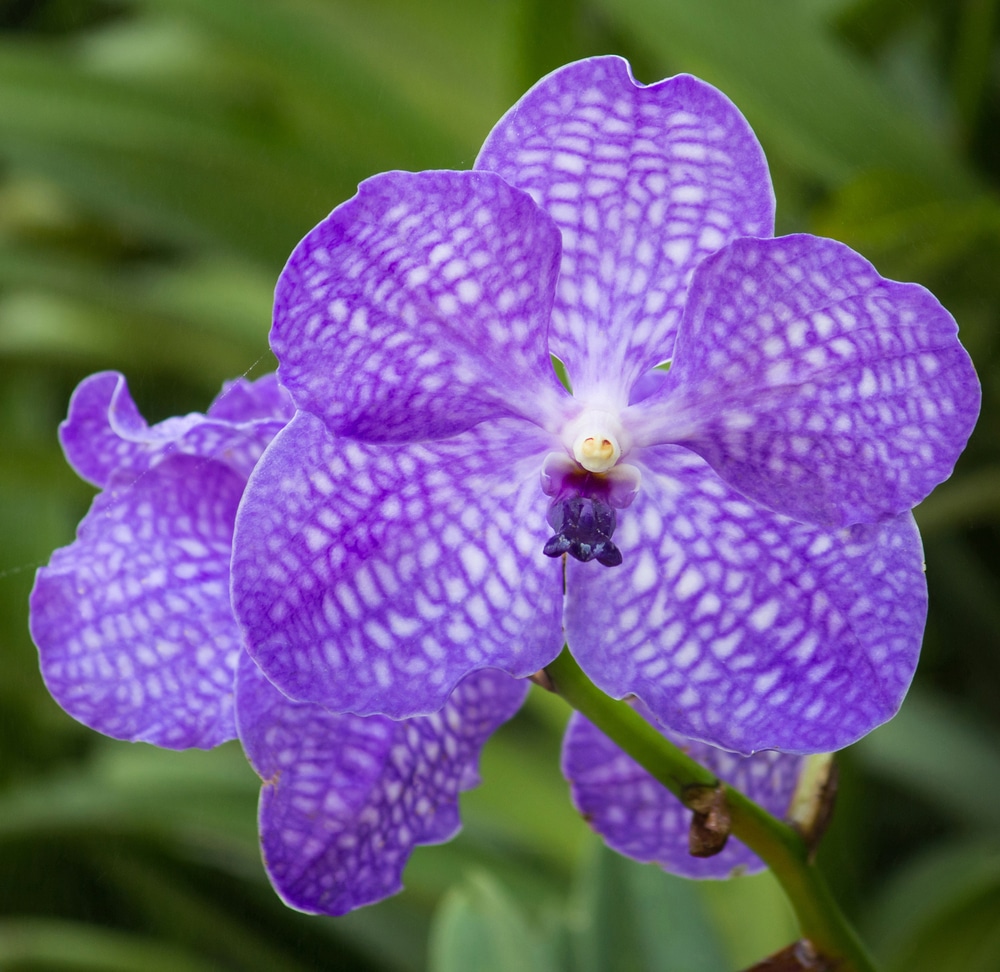
There are over 80 species of the vanda orchid, and many species feature beautiful deep purple foliage. Despite being one of the most well-known types of ornamental flower, they are not beginner-friendly. Unlike many plants that can adapt to different conditions, the high-maintenance Vanda orchid requires that you come close to recreating its natural environment in your home. For example, the Vanda needs periods of heavy watering and dry soil to mimic the rain and drought cycle of the jungle.
The Vanda orchid’s long-lasting, fragrant flowers make them one of the most popular species within the orchid family. If you’re growing seedlings, expect 1-2 years before the first bloom, but if your plant is mature, it should blossom 3 times a year.
Coleus
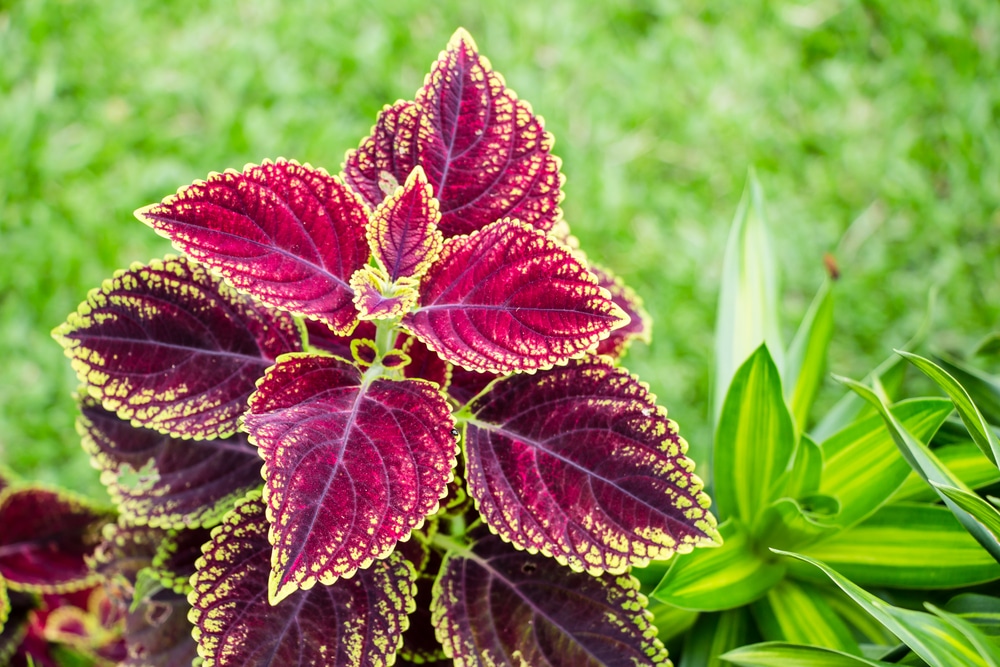
If the coleus (Coleus blumei) seems familiar in look but not in name, you may have heard it described as “painted nettle,” which is its common name and a misnomer. Coleus is in the same family as deadnettle, but true nettle is in the distant family Urticaceae.
Coleus comes in all different shapes, sizes, and colors. The plants are easy to care for, propagate, and grow. And they grow fast! Coleus can reach its maximum height of 3 feet in a single growing season. The bushy, perennial plant produces small flowers, but you may want to pinch these at the base to direct more energy towards the variegated leaves. You can do the same with small shoots.
Purple Oxalis

Purple oxalis (Oxalis triangularis), commonly called false shamrock or purple shamrock, has clover-like leaves and a muted, purple hue. Like a prayer plant, the purple oxalis will fold its leaves at night and open them in the morning. It is commonly found in South America and prefers warm, humid environments.
Purple oxalis is easy to keep as an indoor plant, provided you give it a sunny spot and keep the soil moderately moist. Note that purple oxalis goes dormant in the summer, so if you notice droopy foliage don’t worry. Just cut back on water, and resume your normal routine once you notice new growth.
Ti Plant
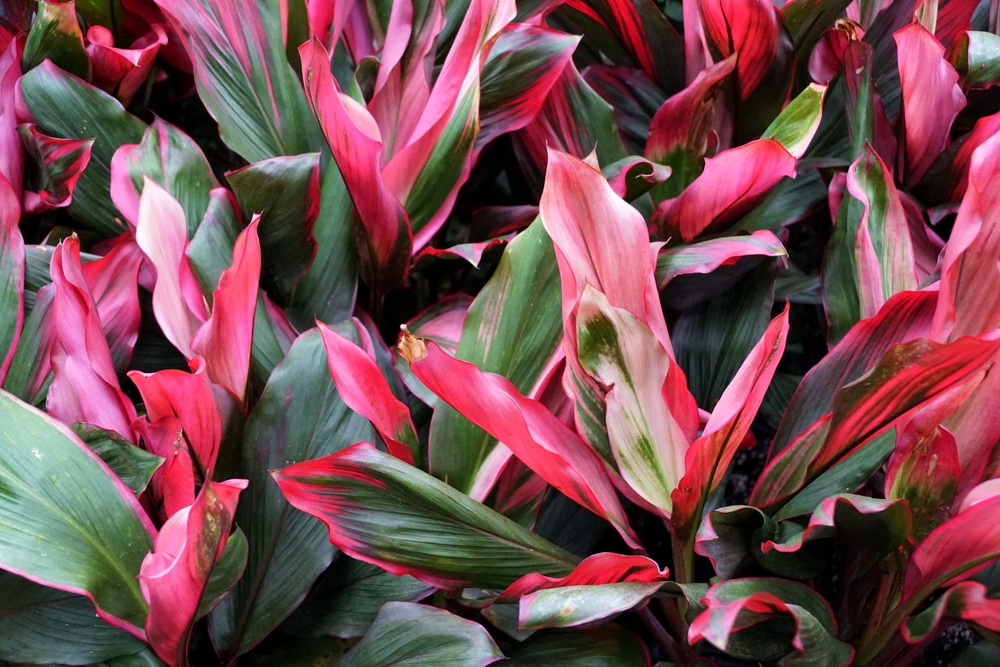
There’s more to the ti plant (Cordyline fruticosa) than meets the eye. And with vibrant, palm-like foliage and imposing size, there’s a lot to look at! But what we’re referring to is the ti plant’s status within Polynesian culture where it is a longstanding symbol of good luck. It is also used in traditional medicine and for food.
The ti plant can grow up to 10 feet tall and 3 feet wide so if you’re planning to keep it indoors, note that it’s more a shrub-like tree than anything. Give it plenty of light, keep it in a warm spot, and ensure that the roots stay moist but not waterlogged.
Tradescantia Zebrina
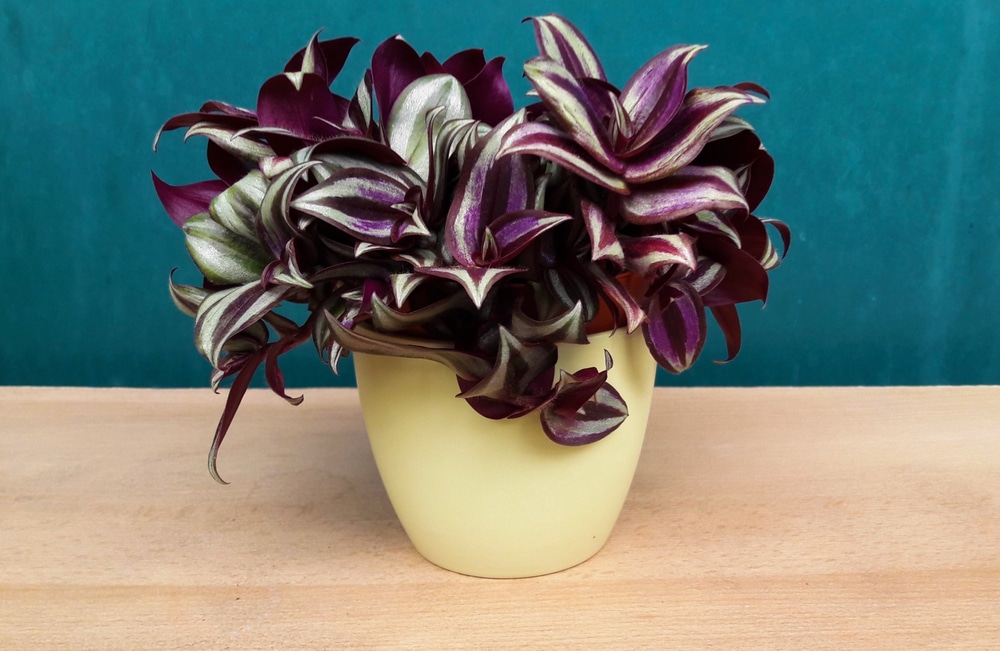
Tradescantia zebrina is one of the many purple species within the Tradescantia genus, which includes more than 85 species of flowering herbaceous plants. The plant is often referred to by its common names “spiderwort,” “inch plant,” and the controversial name “wandering Jew,” which derives from Christain myth and is becoming obsolete.
Tradescantia is a trailing plant and looks beautiful in a hanging planter or creeping up a trellis. It takes very little care to get the tradescantia to flourish, making them a great choice for those with a brown thumb.
Rex Begonia
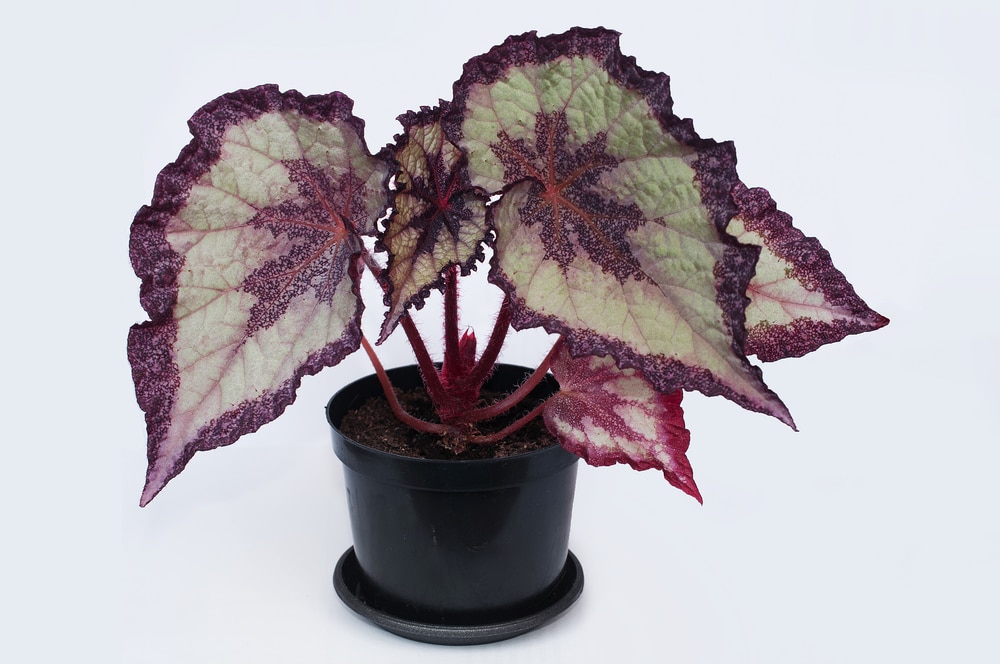
The Latin word for king is “rex,” which is a fitting title for the rex begonia (begonia rex). The bright painted foliage is fit for royalty! The rex begonia is an herbaceous perennial that is best known for its striking foliage. The plant’s variegated leaves are typically green with a splash of a brighter color, like purple.
Rex begonia grows wild in Southeast Asia, where it blankets the jungle floors. While you don’t need to recreate a jungle for the plant to thrive, it does prefer humidity, warmth, and lower light.
Calathea Roseopicta
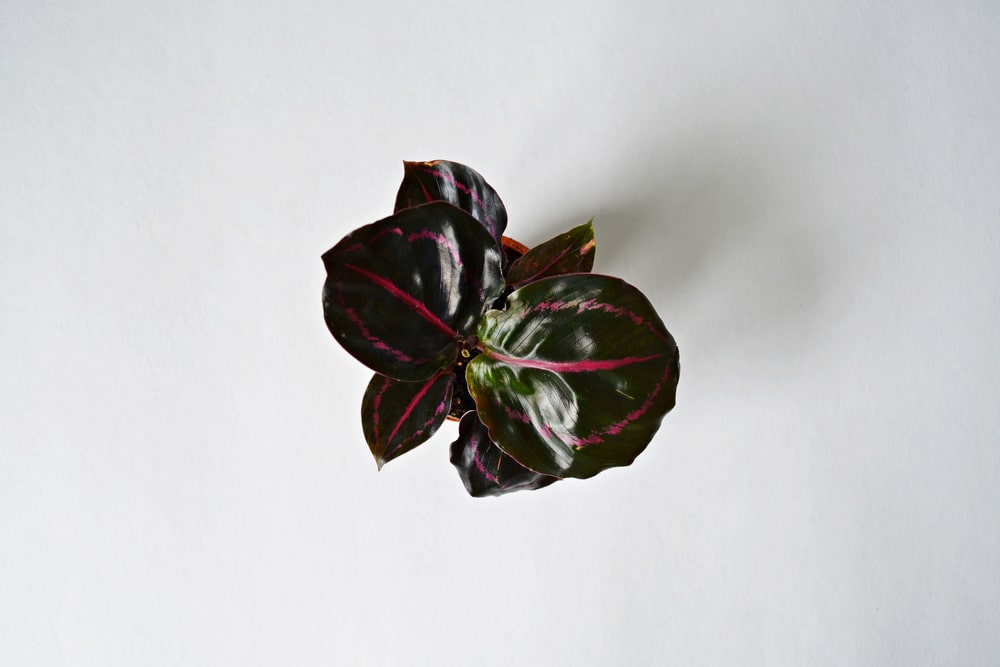
Calathea roseopicta, or rose-painted calathea, belongs to the Marantaceae, or prayer plant family. The plant’s large round leaves are green on top, maroon on bottom, and heavily variegated with pink or purple stripes. But that’s not the only cool thing about the rose-painted calathea. Since it’s a prayer plant, you’ll never catch this guy at rest. Prayer plants fold their leaves at night and open during the day, so they’re always moving.
Give your calathea bright indirect light, enough humidity, and keep the soil moist. If you notice the color draining from the leaves, it may be receiving too much sun.
Persian Shield Plant
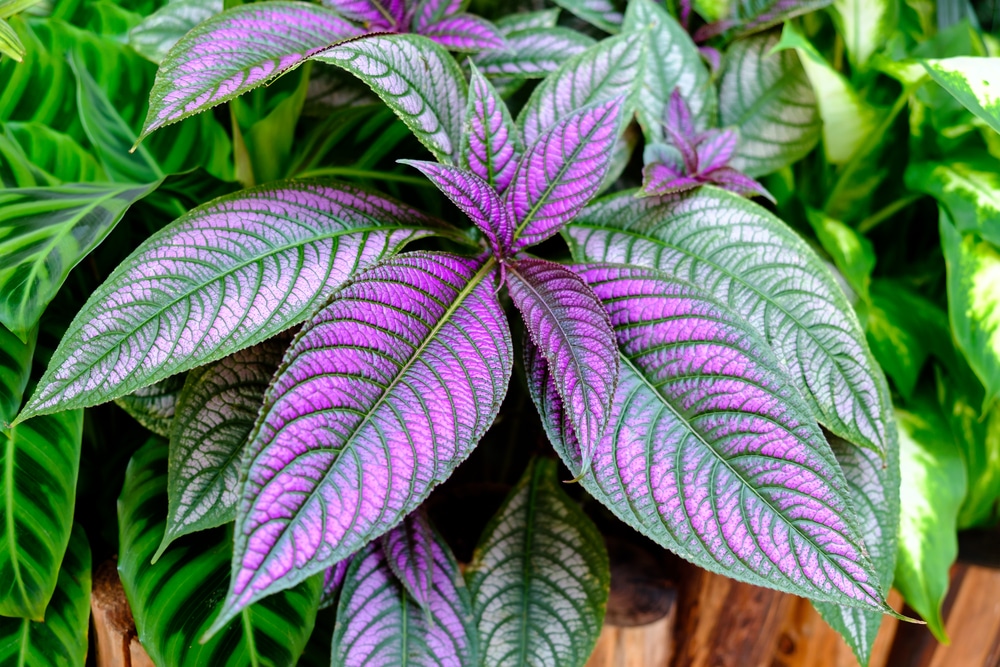
It’s easy to see what makes the Persian shield plant (Strobilanthes dyeriana) so special. It belongs to nature’s iconic class of iridescent flora and fauna. You can thank its reflective thylakoids for that. Their crystal-like structure reflects away light to produce the chameleon-like glitter.
Persian shield plants originated in Myanmar, where they enjoy humid, warm conditions. They can grow to be quite bushy and, in some cases, can reach 4 feet in length. You can grow Persian shield plants indoors or outdoors in the sun or shade. Just remember to keep the air as humid as possible.
Echeveria (Purple Succulent)
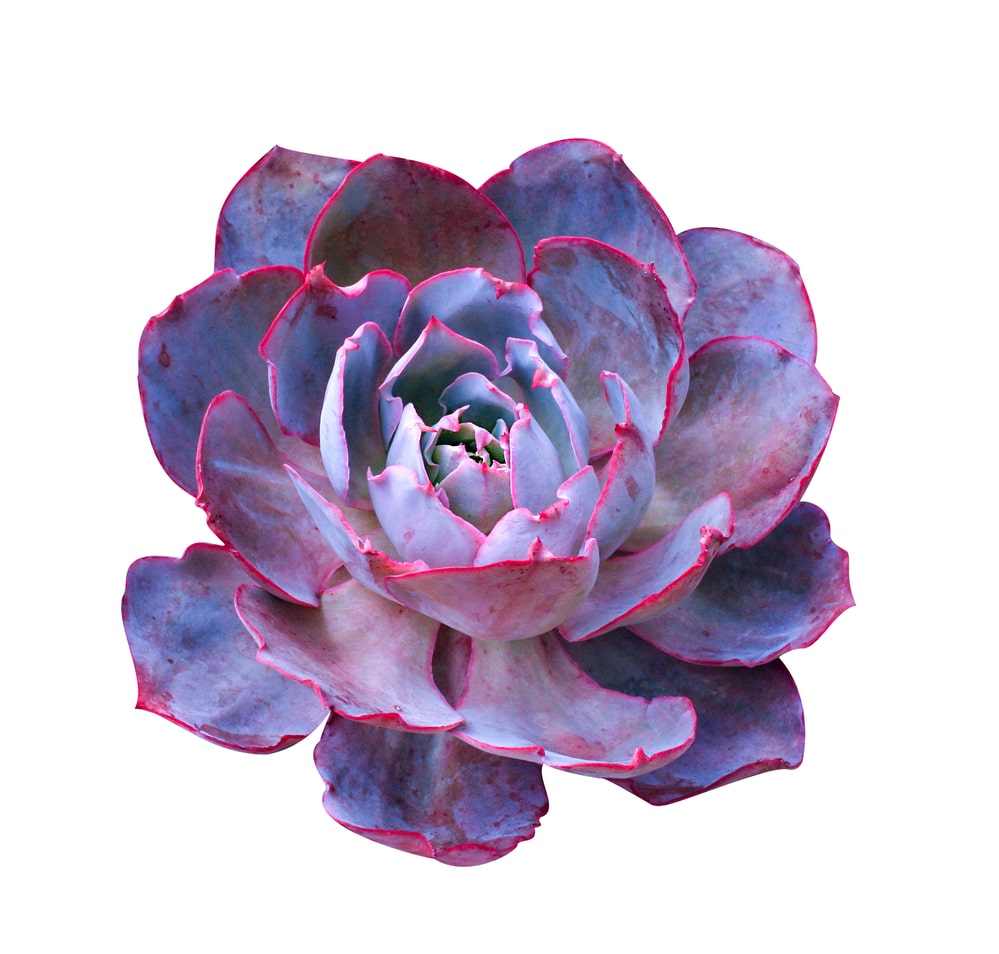
Echeveria or “purple pearl” is a purple-toned succulent and a favorite among professional floral arrangers and hobbyists alike. Its plump, flower-like shape makes it an easy addition to a succulent garden, floral arrangement, or terrarium. Echeverias range in size from a few inches in diameter to nearly 12 inches across.
Echeveria requires the same as other succulents. They hold on to water, so no need to water more than every few weeks. As a rule of thumb, only water when you notice the soil drying out. Give them plenty of sun, plant in well-draining soil, and watch them flourish.
Moses-in-the-Cradle
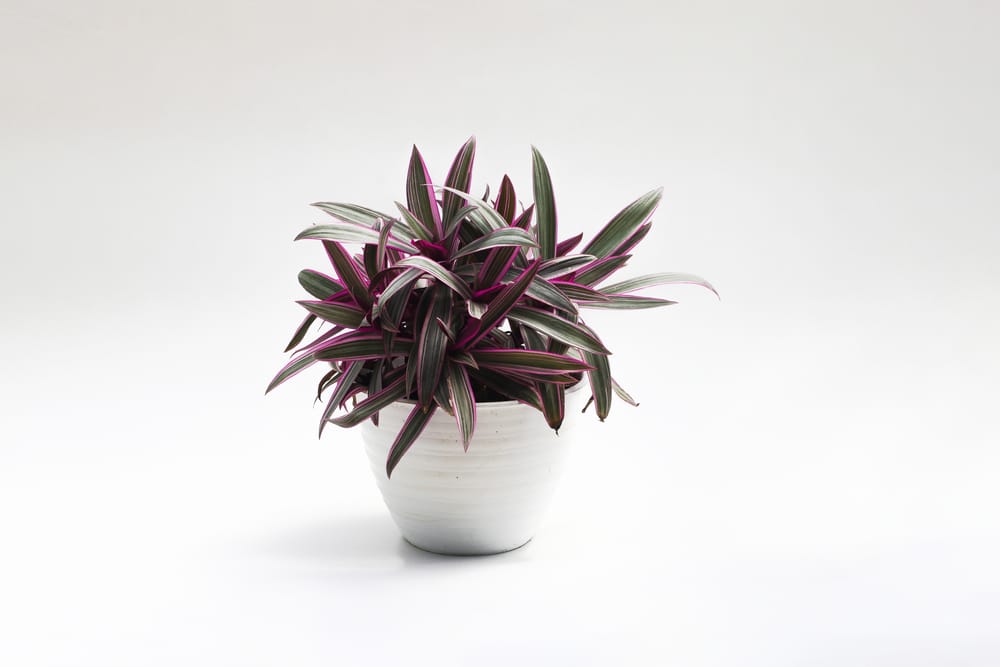
Moses-in-the-cradle goes by many names. It is commonly referred to as an oyster plant, boat lily, or by its botanical name, tradescantia spathacea. If you couldn’t find the common thread there, well, neither could we.
Moses-in-the-cradle is an ornamental beauty with slender green leaves that show off a flashy purple underside. It has a rhizomatic root structure which helps it store water for times of drought and dictates its growth pattern (outward rather than up). Moses-in-the-cradle grows naturally in Central America and the West Indies and requires between 6-8 hours of sunlight. Any less light, and they begin to get leggy.
Cordyline ‘tango’
Cordyline ‘tango’ is one of the bigger plants on this list. The small tree features lance-like leaves that, in many cases, look like they’ve been dipped in purple dye. Their foliage is already beautiful enough as is, but cordyline ‘tango’ also can produce small flowers during the summer. You can get one in any size, but note that they can grow up to 8 feet tall. These plants require very little water but like full sunlight.
African violet
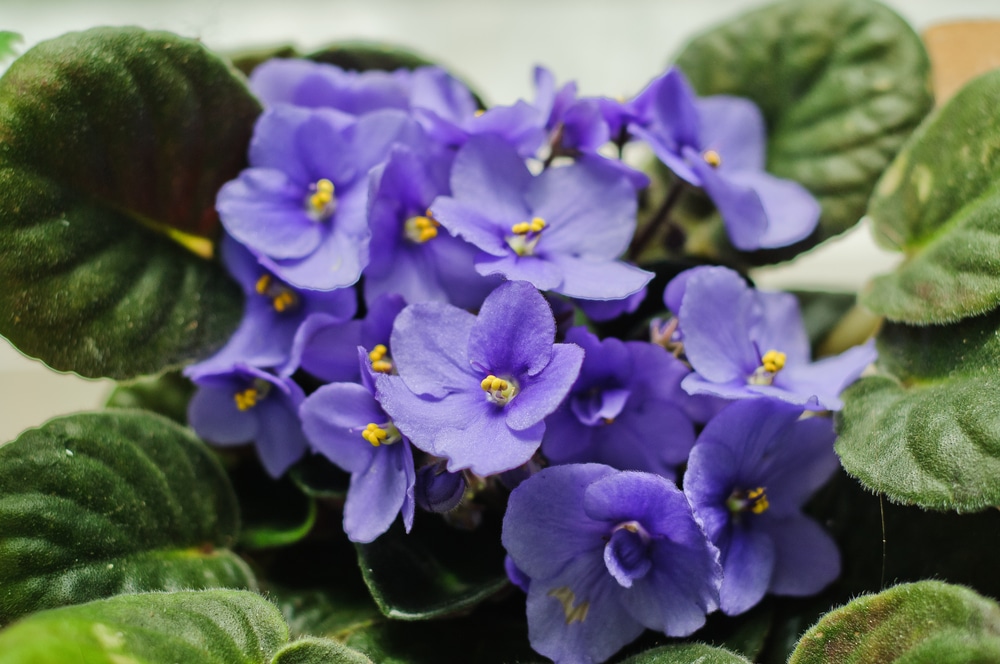
The African violet (Streptocarpus sect. Saintpaulia) produces pretty purple-blue flowers that will brighten any room. The best part? Under the right conditions, African violets can bloom all year long. The key is to keep the air humid, provide plenty of direct light, and replenish the plant’s essential nutrients with fertilizer. African violets are easy to care for overall, but their fuzzy leaves are sensitive to water, so make sure to avoid contact. They can also be unruly growers, so feel free to prune as needed.
Caladium

There are over a thousand different cultivars of the caladium plant, many of which are mahogany or purple. Caladium foliage almost looks as if it were painted with watercolors. In the wild, they can grow to be nearly 35 inches tall with leaves that range between 6 and 18 inches long. When grown as houseplants, they tend to be much smaller and are also available in dwarf varieties. The caladium is native to South America, where they grow in forests and on river banks.
The key to preserving the caladium’s colors is to keep it out of the sun’s bleaching rays. Partial sun and well-draining soil with organic matter can also help prevent the colors from fading.
Waffle Plant
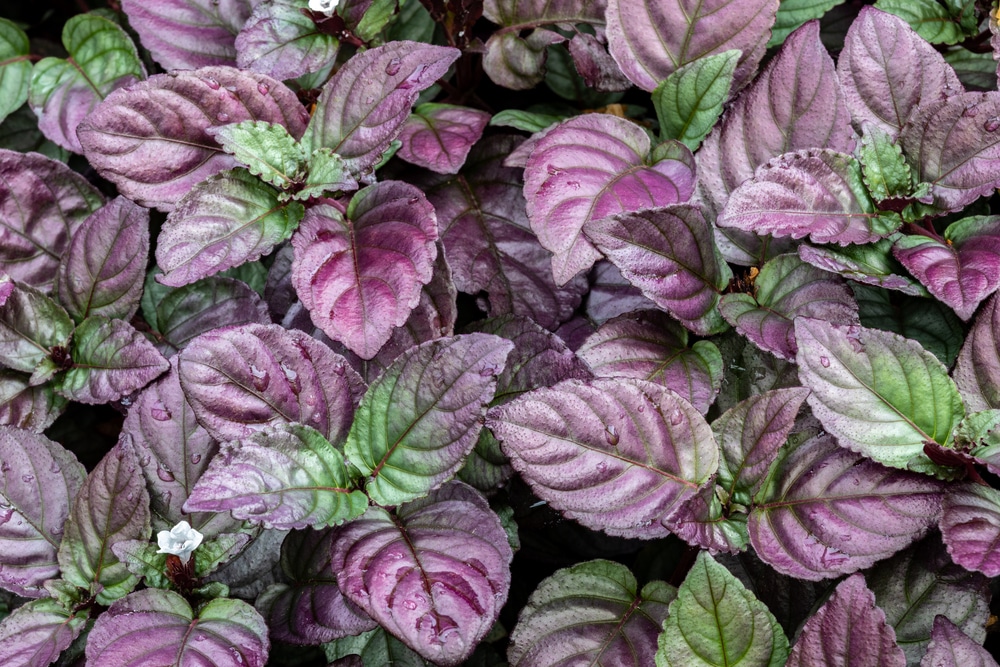
The waffle plant (Strobilanthes alternata) is a perfect small house plant to keep on your desk or dresser. Their crinkly, purple leaves may resemble kale more than they do a waffle, but they’re unique nonetheless. The waffle plant is a tropical perennial that originates from the Indonesian island of Java, where it is a key ingredient in a few local medicinal tinctures.
Waffle plant care can be boiled down to two main components: warm temperature and regular watering. Direct sun will fade the distinctive shimmer of the leaves, so try to keep it in partial or indirect sun.
Silver Squill
Silver squill (Ledebouria socialis) is a pocket-size perennial plant from the deserts of South Africa. The purple on the silver squill is not as loud as on some ornamental plants, but its purple polka dots still give the plant a special flair. The small plant has lance-like leaves that are primarily green but feature silver spots and purple leopard spots.
While silver squill may not resemble a succulent in appearance, they share a key drought survival tactic. Like the succulent that can at times comprise 90-95% water, the silver squill stores water in its bulb. This means that you should keep watering to a minimum; Only water when the top inch or two of the soil dries out. The silver squill likes indirect light and rich, well-draining soil.
String of Rubies
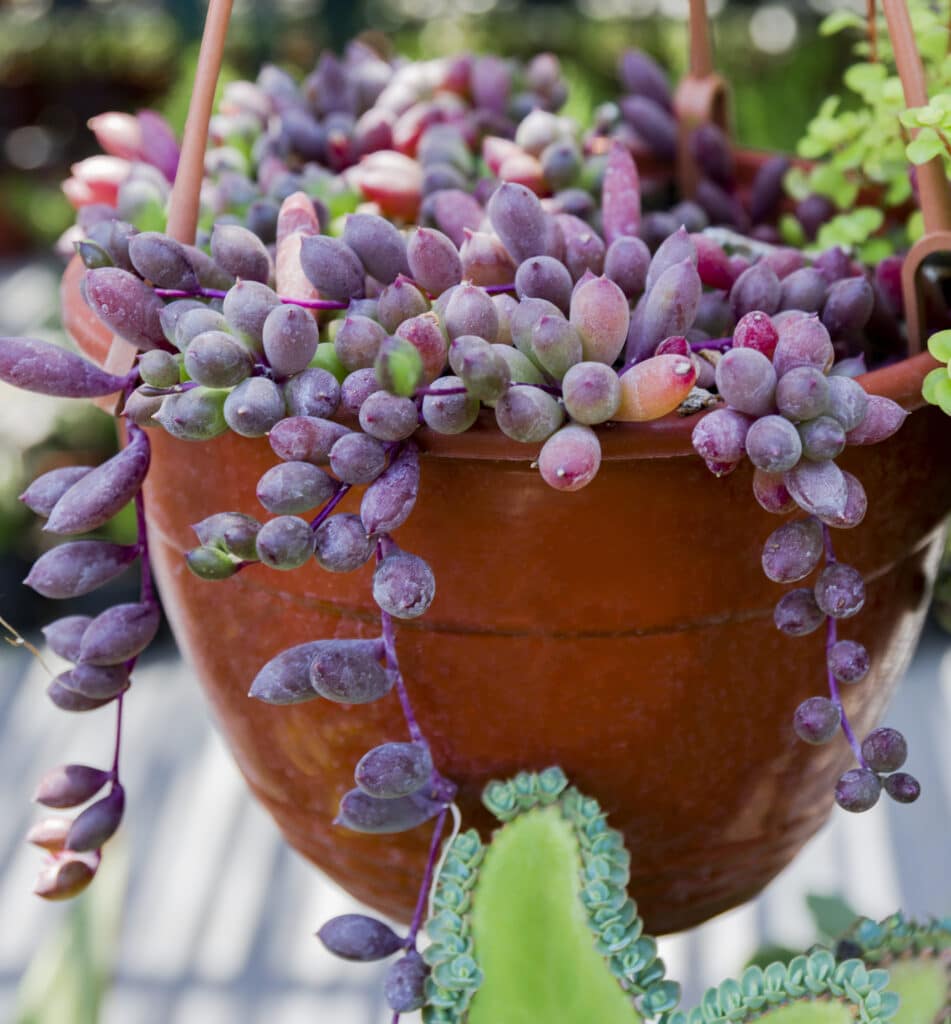
The string of rubies (Othonna capensis) or “ruby necklace” is a trailing succulent that is often displayed as a hanging plant. The oblong bead-like leaves attach to purple stems that over time will spill out in a mahogany cascade. If properly cared for, the string of rubies will produce small daisy-like flowers. The string of rubies is native to South Africa.
The oblong leaves on a string of rubies contain water and help the plant survive periods of drought. If you notice the beads beginning to shrivel, you may need to give your plant a bit more water. Caring for a string of rubies is the same as caring for any succulent. They like deep waterings with time to dry out in between, coarse and well-draining soil, and plenty of sun.
Purple sword
The purple sword (Alocasia Lauterbachina) or elephant ear is a unique variety of Alocasia. This tropical native has waxy, lance-shaped leaves with purple undersides. The purple sword’s unique leaves can each grow to be 2 feet long.
Purple sword plants are very easy-going. Water thoroughly once you notice the top layer of the soil drying out, and keep in bright, indirect light.
Rattlesnake plant
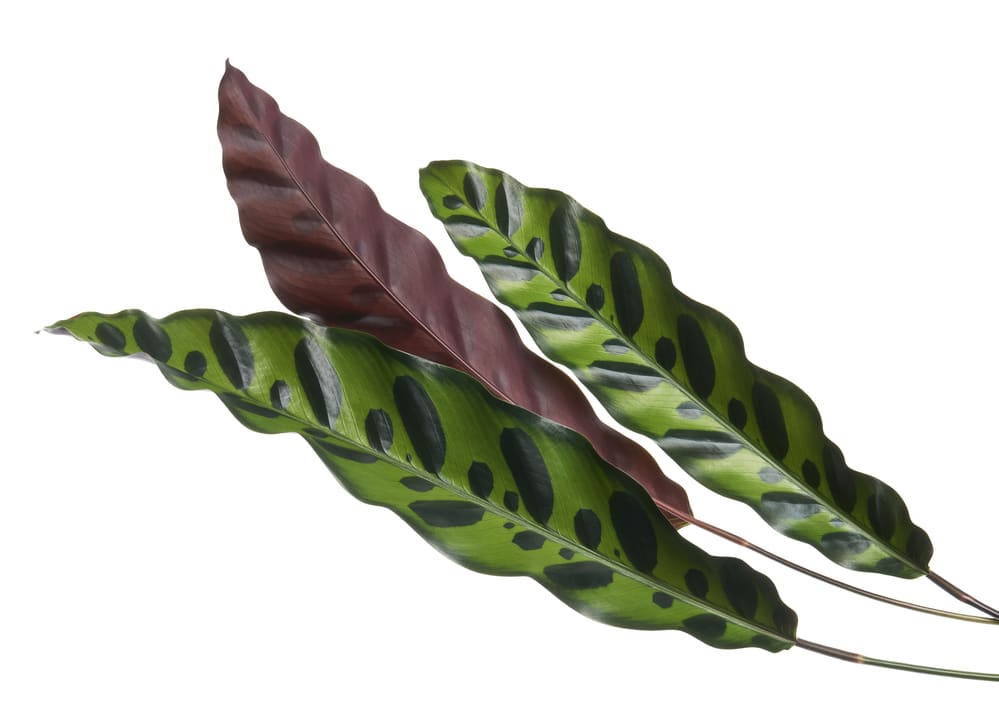
The rattlesnake plant closely resembles its namesake. Its slender, wavy leaves even have a similarly distinctive pattern to the rattlesnake, though the plant version is much less likely to bite you. The purple color on this plant is subtle but adds dimension to the spotted leaves.
Native to the jungles of Brazil, the rattlesnake plant enjoys a humid and warm environment. The rattlesnake plant is not beginner-friendly mainly because it has a very limited tolerance for conditions outside of its ideal. The plant’s growth will reflect any elements it finds intolerable, like drafts, temperature dips, or inconsistent lighting.
Iron cross begonia
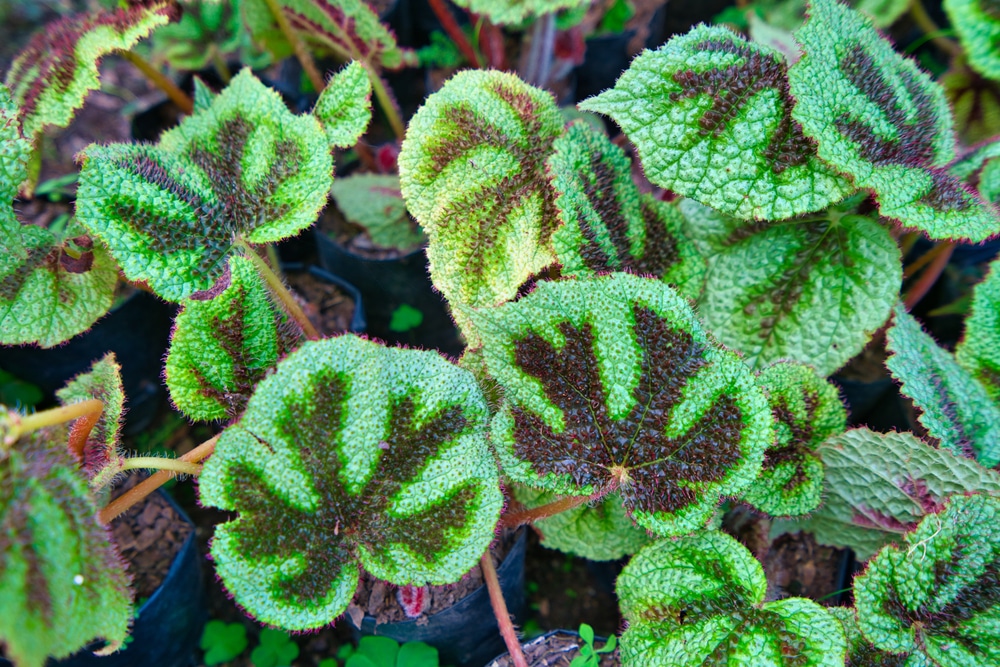
It’s uncommon for plants to have distinct shapes stamped on their foliage, but that’s exactly what makes the iron cross begonia (Begonia masoniana) stand out. The rhizomatous begonia produces large bright green leaves with purple-brown crosses at the center. The leaves have a pebble-like texture and can grow up to 8 inches long. The imposing plant is often mistaken for a rex begonia cultivar, but it is classified differently as a Coelocentrum.
Iron cross begonia has rhizomatous roots that store water underneath the soil’s surface. You won’t need to water this drought-resistance plant often, but do make sure it’s planted in well-draining soil. The fuzzy leaves are sensitive to contact with water, so avoid misting and water with care.
Rubber trees
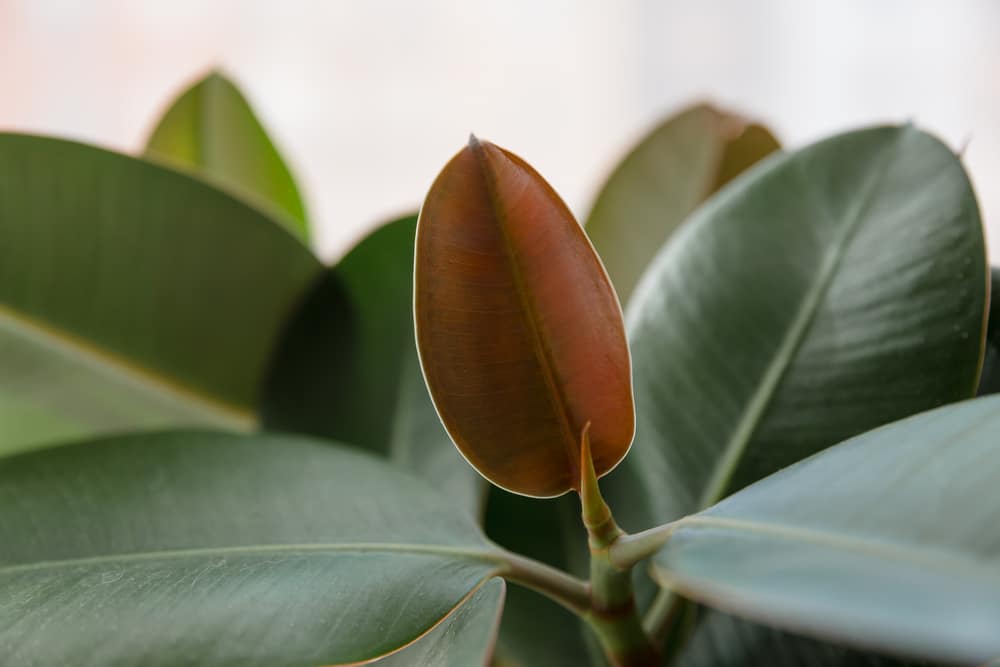
The rubber plant is (Ficus elastica) named after the texture of its thick glossy leaves. As the botanical name suggests, it belongs to the fig family and is also a part of the banyan subset. Banyan figs are epiphytic, which means that they produce aerial roots that cling to nearby surfaces. As a fig, the rubber plant can produce small yellow fruits but these are not edible.
Rubber plants have broad, oval leaves that can be between 4 and 14 inches long. Note that leaf size is much bigger on younger plants than it is on mature ones. Rubber plant care is hard to mess up, and if you do, you’re in luck because the plant is incredibly forgiving. You’ll want to water regularly, provide indirect sunlight, and maintain high humidity if possible.
Purple heart
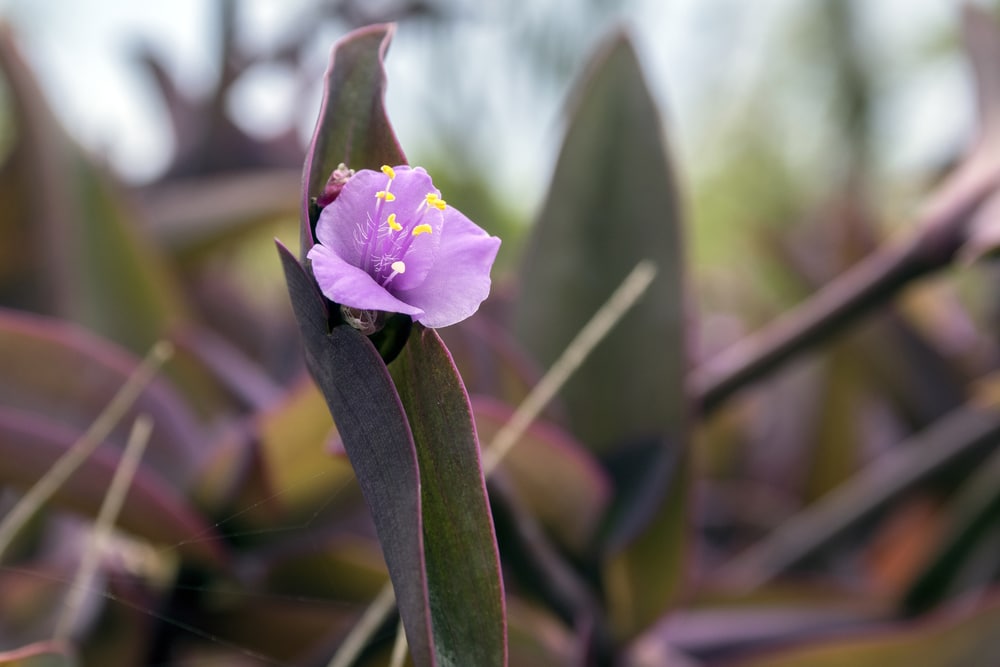
The purple heart (Tradescantia pallida) is like the inch plant’s showier cousin. Also a member of the Tradescantia genus, the purple heart is a sprawling evergreen perennial with deep purple foliage. With the right care, the purple heart puts out clusters of small flowers that can range in color from violet to pink. The plant is native to the gulf region of Mexico, so it prefers humid, warm temperatures. Grow in bright sunlight to maintain the purple color. Too much shade will lead to greener foliage.
Aglaonema

The Aglaonema or “Chinese evergreen” is a genus of tropical plant that comes in a range of hues, including pink-purple. In Asia, Aglaonemas have long been associated with good luck, but their beauty and adaptability have gained them a global following as well. Aglaonemas will thrive in any home or office space, especially if you put them in a spot that gets bright, indirect light. Some cultivars can withstand low-light or even fluorescent light, but all aglaonema struggle when exposed directly to the sun’s harsh rays.
Purple Sweet Potato Vine
Ornamental sweet potato vines (Ipomoea butatas) make for undemanding houseplants. While they can produce edible tubers, the plants are typically grown for their deep purple color and bushy foliage. There are many different cultivars of ornamental sweet potato vine, but if it’s purple that you’re after, we recommend either the “sweet Carolina ‘purple’ or the “Blackie.” Both varieties boast beautiful purple leaves and are great options if you want an easy-care, ornamental vine.
The long, trailing stalks of ornamental sweet potatoes are perfect for a hanging planter. Even though they’re drought-tolerant, try to keep the soil moist and place it in a bright, sunny location. If you notice leggy stalks, trim back to encourage bushy growth.
Bromeliad Neoregelia “Purple Star”
Bromeliad Neoregelia “purple star” is a cultivar that belongs to the Neoregelia genus. Neoregelias are native to the South American rainforests, where they grow as epiphytes on the branches of surrounding trees. There are nearly 90 species of Neoregelia and many more hybrids that range dramatically in size, shape, and color. The “purple star” is just one of many colorful Neogrelia to choose from.
Neoregelia does not naturally grow in the ground and mainly uses its roots for support. Pot in any potting mix and keep out of the sun. While slightly more cold-hardy than other tropical plants, they can’t survive temperatures that dip too far below 55 degrees.
Royal Flush Plant
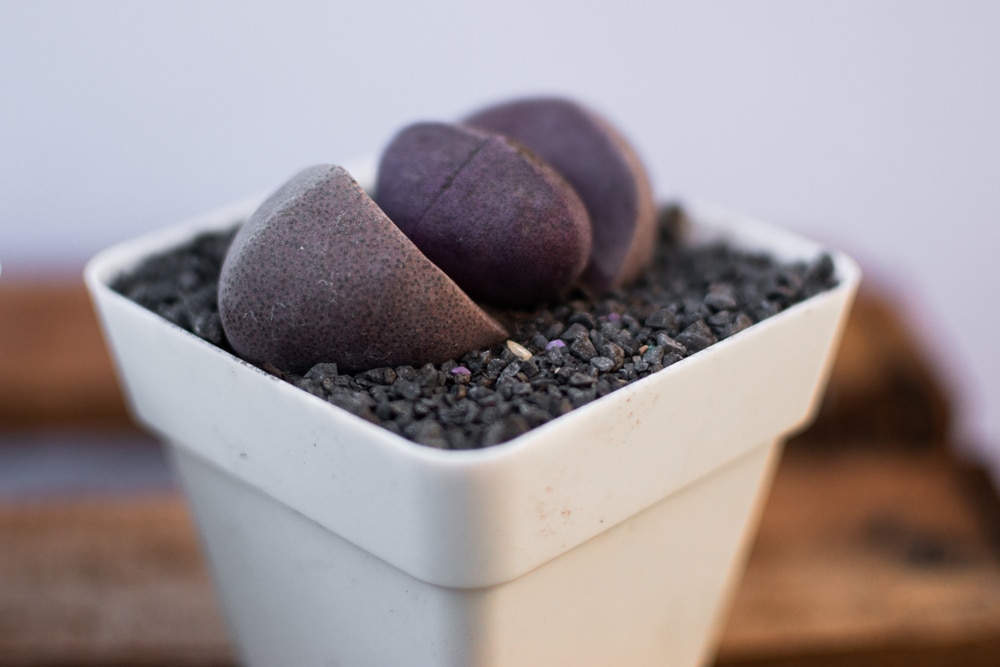
The royal flush plant (Pleiospilos nelii) is a funky purple succulent that produces bright daisy-like flowers. Its common name “split rock” describes its unique leaves which grow thick and in twos, resembling a splitting rock. Royal flush plants require a little more attention than your average succulent, but their care basics are still straightforward. Plant in a very well-draining mix, provide plenty of sunlight and keep watering to a minimum. Royal flush plants will remain petite and will never exceed 3.5 inches.
Cyclamen

The Cyclamen genus contains 23 species of plants that produce pink and purple flowers. Cyclamen can bloom any time of year but will go dormant for a few months afterward. Their foliage may die, but their roots and tuber will stay alive beneath the soil’s surface. Remove the dead foliage and keep watering to a minimum until you notice the plant emerging from dormancy. At this point, you can resume your regular watering and care routine. Cyclamen have a tuber that grows quickly, so this is also a good time to check that it hasn’t outgrown the pot.
African Milk Tree “Rubra”
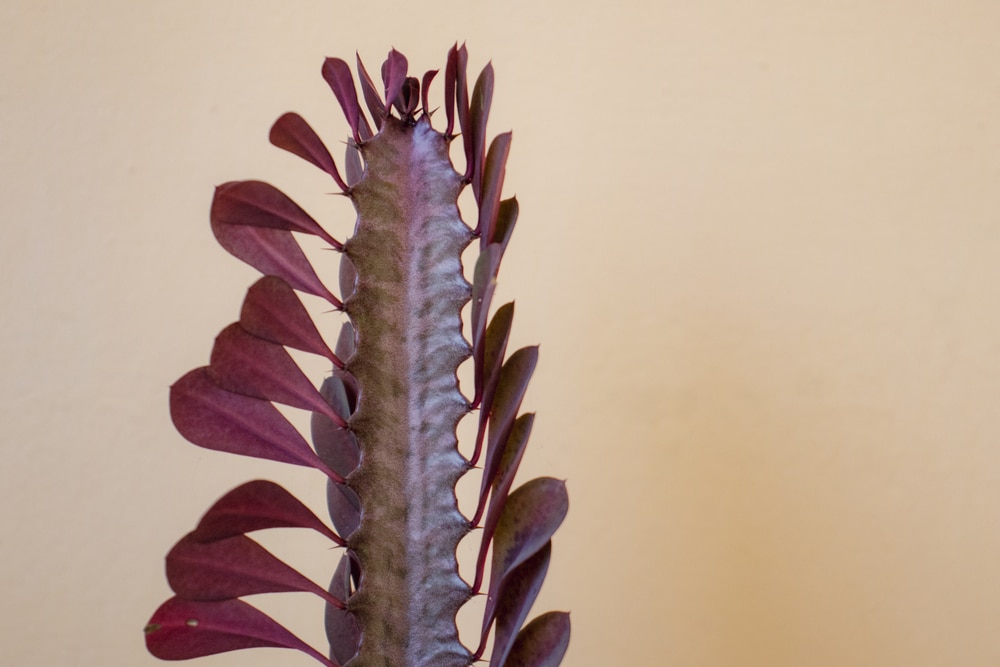
The African milk tree (Euphorbia trigona) is a large succulent that often gets mistaken for a cactus. Most African milk trees are green, but the “Rubra” variety is entirely pink-purple. As far as large succulents go, this one requires very little care to thrive. Place it in bright light, water when soil is dry, and you’re good to go.
The African milk tree grows fast, especially in the spring and summer, and can get up to 6 or 7 feet tall. It goes dormant during the winter, so expect growth to stop and some of the color to fade. Even the “Rubra” variety will appear more green than purple during dormancy, but this is only temporary
